THE WAGON DRIVER'S HOMESTEAD
Gehring Ranch, Helena
December 25, 2019
In the travel and research to collect the information that led to these articles and paintings we met good people of all sizes, shapes, and backgrounds, but only once were we greeted by a rancher with a firearm in hand.
This was in 2006, northwest of Helena along Lincoln Road, and, indeed, he was admittedly suspicious of strangers, who, he said, were stealing things from him. We did our best to explain that theft was not our trade, but that we hoped to learn about the history of his ranch and to snap a few photos of it.
After a little negotiation he agreed to these incursions and allowed Jane to explore the near vicinity with her camera, while Larry played the role of hostage. The man stood in his open doorway with his revolver, and Larry on the porch next to the watering can in the picture. The man kept an eye on the prisoner while both sides asked questions. As a further gesture of good faith we wrote him a note with our names, address, and phone number.
This was our introduction to Mr. Jack Gehring, an elderly, defensive, infirm man, who spoke at length on the pressure of change surrounding him. Most neighboring ranches, he said, already had been subdivided.
We left Mr. Gehring on better terms than we arrived, but our acquaintance ended on a melancholy note. Less than a week following our introduction, his son, Bill, called one night with the news that his father had passed away only a few days before that. He was curious about us and how our names and number were discovered on the kitchen table. From both him and the details Jack briefly shared, we were able to put together the history of this fine ranching family.
After his duty tour in the Civil War, Jack's grandfather, Bartholomew, came west from Indiana as a wagon driver and arrived in Montana in 1865. His horses took him on a precipitous plunge down a steep hill. He feared the brakes would burn out, but when he got his rig to a safe halt, he decided that very spot would be a most excellent one in which to live. Perhaps the thrilling ride contributed to that idea, but he took advantage of the Homestead Proclamation, a recent addition to the way of things, and picked up a part of his new state.
Bartholomew married Jane, and they produced a son, David, who, with his wife, Ann, had Jack, who took a wife, Rose, and their son is Bill. Through these 150 or so years, not only children were raised, but cattle, chickens, and pigs, and they marketed dairy products, eggs, and a multitude of crops, even berries and fruits. David carefully documented what was raised and sold, while Ann was the photographer of their times there. Jack's wife, Rose, began another significant contribution when she traded a beef calf for a bison calf and thus founded the Gehring ranch bison herd. Just as innovative, Jack started another enterprise, a sawmill.
As mentioned, Jack was most eloquent on the subject of Helena-type civilization's creeping up on him and also on Helena-style and other government taxation's eroding what he and his ancestors had built. He almost lost the latter battle, for the government was about to sell the place to mining companies for back taxes. However, his son, Bill, with the help of others, was able to settle the dispute and save it.
The ranch house has quite an architectural history. The front was built in 1870, the kitchen in 1930, the second floor and bedrooms around 1948. However, the painting of the welcoming kettle always will be special to the man held hostage and the woman frantically clicking pictures before that trigger was pulled. Happily, there were no casualties.
The picture of the confusion of logs beside Lincoln Road, northwest of Helena, (Who remembers Lincoln Logs?) was once part of a stagecoach stop on the property. Furthermore, Bartholomew quickly learned that his land lay on a route desired for moving cattle in and out of the State and between Helena and Fort Benton, so he built a trough for folks to water their herds, and then sold fresh supplies to all that stopped.
The more distant of the two buildings in the final painting is a red barn, while the nearer building functioned as a bunkhouse, attesting to the fact of the ranch's success.
It was Bill that mentioned the bison, the genetics of which he strengthens by importing new members from different herds, and his desire to follow his father's wishes and preserve the property, which has about twenty old buildings. The passage of time has illustrated how successful he was. First, in 2016 the Prickly Pear Land Trust, by whom Jane had been commissioned several years before to execute a drawing of the State Capitol Building in Helena, placed a conservation easement on the Gehring ranch. That success was followed in 2017 by the property's addition to the National Register of Historic Places, and at one time the wagon driver's ranch was the only land parcel to be distinguished by inclusion in both. Rose was very proud of her son for these awards' coming to fruition, for he worked hard to save the ranch and have it recognized.
It was our pleasure to know Mr. Jack Gehring, to hear from his lips his love and dedication to the family legacy, and to record these scenes and notes of the land he treasured. We are confident that, because of his son's diligence, his anxious soul rests now in peace. As Bill stated, "This ranch is an island in all this development." Jack Gehring must like that.

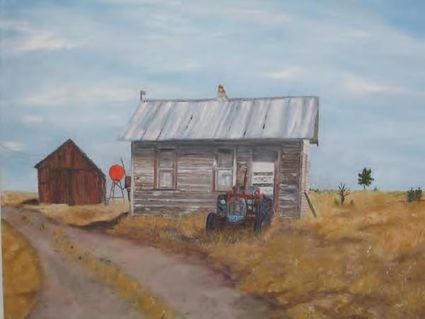
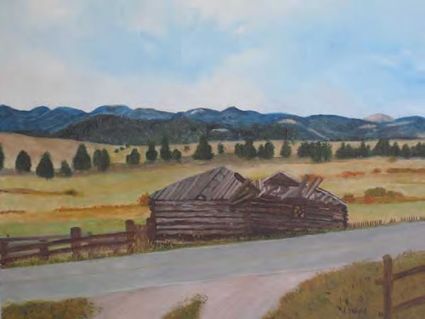
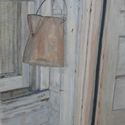
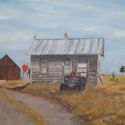
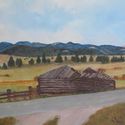





Reader Comments(0)